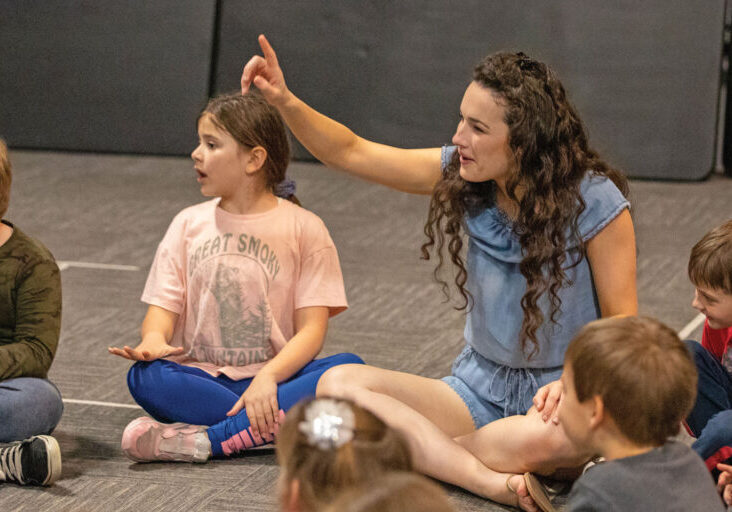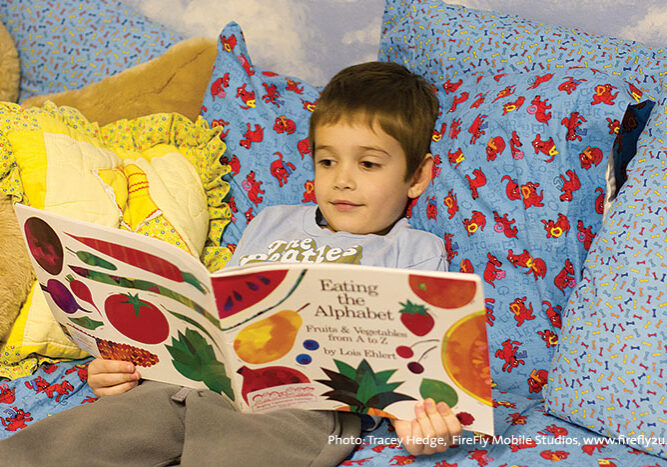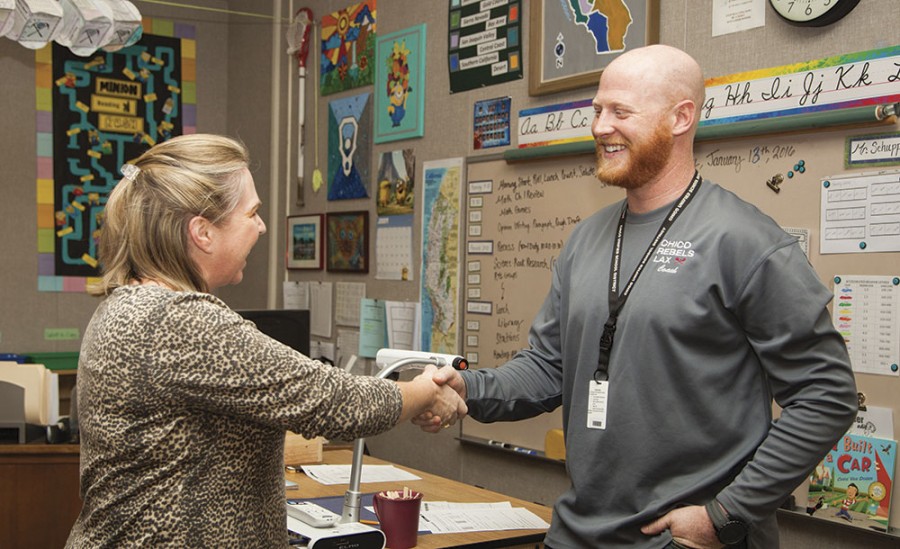Kids are notoriously reticent when it comes to divulging details of their school lives. Questions from parents often receive a single-word response … or a shrug. The first indication of a problem may come via an unexpected note from the teacher.
Want better insight into classroom dynamics? There’s a solution: Get to know your child’s teacher. Research shows that a solid working relationship between teacher and parent can lead to fewer behavioral problems and better academic performance for the child. Teachers pay more attention to students whose parents are involved and are more apt to identify problems in the early stages when intervention is more successful. Sally McEntire, mother of two, has made a practice of nurturing the parent-teacher relationship early on. She says, “I don’t want the teacher to hesitate talking to me if they have concerns regarding my child.”
Isabel Recht has been an elementary classroom teacher for eight years. Soon after school starts, she sends a memo to parents, noting times when help is needed. She’s aware that many parents are unable to volunteer during the school day, and lists many tasks that can be done off site. She laughs and says, “It was one of my parents who set up the online volunteer sign-up system for my classroom last year!”
Here’s a list of building blocks for that all-important parent-teacher relationship:
Introduce yourself. Face-to-face contact is best, but a brief email or handwritten note works, too. You want the teacher to connect your child specifically to you.
Define communication. Some teachers prefer to correspond via email. Others like a quick handwritten note, and still others prefer an after-school phone call. Pay attention to specifics. As Recht says, “Don’t send an important email before school starts in the morning – I won’t be able to read it.”
Describe your child’s interests. Help the teacher understand what motivates your child, without bragging. For instance, “Katy enjoys figuring out how things are put together and is involved in a robotics club,” will be better received than, “Katy was chosen ‘Most Valuable Member’ of her robotics club last year.”
Identify challenges. Approach the teacher as a partner, rather than relieving your child of responsibility. Instead of, “Danny has trouble keeping track of things, so don’t be surprised if he loses his homework,” try, “Danny has difficulty with organization. Here’s what has helped at home, and I’d be happy to hear your suggestions.”
Connect. Show an interest in the teacher’s life outside of school. Is she a birdwatcher? Quilter? Fan of a professional sports team? As McEntire says, “I take time to get to know them, to find something in common, and even better, to find something my kid and teacher have in common or can talk about. I want the teacher endeared to my child.”
Volunteer. Let the teacher know if you have particular strengths, interests, and preferences. Do you like working directly with students? Or would you rather prepare materials? If your schedule doesn’t allow you to be in the classroom, can you chaperone an occasional field trip?
Help without helicoptering. You can volunteer in the classroom without being your child’s personal assistant. Look for opportunities to help other students or prep materials while observing your child. If your presence distracts your child, perhaps you can assist in the library, lunchroom, or another classroom.
Keep the teacher in the loop. Convey circumstances likely to affect your child’s classroom performance. A recent illness, lack of sleep, side effects from medication, an impending move, a death or divorce in the family – all can impact a child’s behavior and achievement. A heads-up allows the teacher to be proactive. As McEntire concludes, “Because I have spent time building a relationship with the teacher, it’s much easier to approach her when difficulties arise. Instead of having a personal conversation with someone I don’t know, I’m talking with someone I have a rapport with.”
Respect the teacher’s time. Remember how many other students are in the class, and understand that the teacher simply doesn’t have time for extended daily conversations with parents.
Recht says, “It’s important for a child’s success to see that his parents are involved in the school and interested in his education.” An added bonus? When you’ve established a solid parent-teacher relationship, it’s much easier to trust your child and teacher to work through many classroom issues on their own.
Helpful Books
- The Parent Backpack for Kindergarten through Grade 5: How to Support Your Child’s Education, End Homework Meltdowns, and Build Parent-Teacher Connections by ML Nichols.
- Beyond the Bake Sale: The Essential Guide to Family-School Partnerships by Anne T. Henderson (editor).
- Building Successful Partnerships: A Guide for Developing Parent and Family Involvement Programs by The National PTA.
Posted in: Education
Comment Policy: All viewpoints are welcome, but comments should remain relevant. Personal attacks, profanity, and aggressive behavior are not allowed. No spam, advertising, or promoting of products/services. Please, only use your real name and limit the amount of links submitted in your comment.
You Might Also Like...

Big Dreams Give Kids A Chance To Learn
A rooster crows. A cantor chants the Muslim call to prayer. Songs from a Christian church echo through the village. Morning has come to Kyebando, Uganda. Mothers wake children who quickly […]

Everybody Is A Genius
“Everybody is a genius. But if you judge a fish by its ability to climb a tree, it will live its whole life believing that it is stupid.” ~ Albert […]

Hope for the Future at Chico’s Hope Academy
Hope for future generations rests on the strengths of individuals and those strengths are most fully developed with individualized attention and learning. Small class sizes are just one of the […]

Again! Again! How to Make Reading Irresistible for Preschool Boys
I want my son to love books – so I began reading to him when he was tiny. Despair descended when, at six months old, he was more interested in eating […]




